The relationship between dog behavior and environment is important to understand.
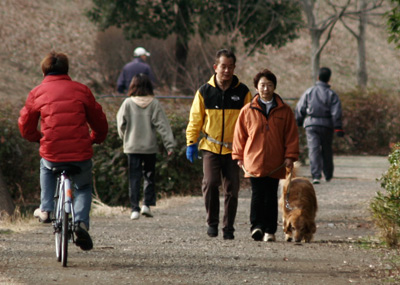
Dog behavior and environment are related in more ways than we often understand or are able to see. Any animal on this planet, including humans, have adapted to certain environments that have shaped their way of life. But that is just the surface. It goes deeper and gets more complicated once you start learning how big of an environmental impact your dog gets in his daily life.
The following list, although not in any particular order, are all factors in understanding dog behavior and environment reactions.
- The dog’s inherited behavior temperaments
- The level of the dog’s socialization
- The dog’s relationship with his owner and other humans
- The environment where the dog lives
Environmental impact and distractions
When we are addressing the environment in dog training terms we often use the expression “distractions”.
There are different levels of “distractions” and they are based on the level and intensity at which our dog will react differently. For example, a dog won’t behave the same way if a truck hits the horn 50 meters away from him as he would if it happened while passing right next to him. In this case the stimulus is the same (the truck hitting the horn) but the intensity of the volume and the distance are different.
Generally speaking the environment is always different. And this is the key factor as to why so many times we fail to understand why our dog behaves the way he does in certain situations.
Dogs see the world differently from us and they will adjust their behavior according to even the slightest change in a familiar environment.
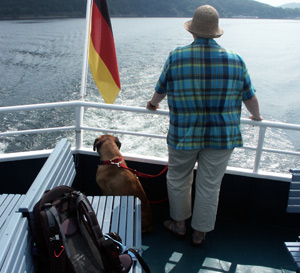
If your dog plays with your kids and their friend in your backyard, that doesn’t necessarily mean that your dog will react the same way toward kids in your friend’s back yard. You can do a simple test. Put an item (that is a different size, shape and color from the surrounding environment) in the middle of the room or in your backyard making it visible to your dog and watch your dog’s reaction.
Rarely will your dog approach the object right away, in most cases you will see hostile dog behavior patterns that are a mix between defence and avoidance, in some cases the dog may even “attack” the object or shut down and act fearful, completely avoiding the object for several days or more.
The reaction in this case will vary dependant on the dog’s inherited behaviors and temperaments and the level of socialization and relationship , etc.
It is important when we talk about dog behavior and environment, to mention dog behavior patterns in unfamiliar environments. Again, you may think that your dog has seen hundreds of trucks in his life and that there was no reason for misbehaving at a certain moment, but on the other hand you may be somewhere in which your dog is not familiar with the environment.
There are hundreds of thousands of different scenarios that can happen. Unfortunately, due to a lack of knowledge and experience, many dog owners and dog trainers would apply corrections to their dogs in the situation mentioned above with the truck’s horn, labelling the dog behavior as “bad” or “misbehaving”.
The truth is that dogs will never behave or react without a reason, so instead of misjudging try to understand what actually happened.
What to do in these kinds of situations with these dog behaviors and environments?
Prevention; is the best thing that you can do with your dog. Most dog owners are waiting for the last moment when the issue is obvious or that their dog behaves dangerously before dealing with dog behavior and environment. In order to help prevent it, you need to;
- If possible, get a puppy from a reliable dog breeder or owner who cares about the behavior quality of breeding dogs
DO NOT skip the puppy socialization period. Most dog owners wait to start this process when dogs are 8-9 months or older, in most cases this is too late as the majority of the puppy socialization period is completed in the first 16 weeks or so. Puppy socialization is a complex and well structured operation for which you have only a small window of opportunity.
Be aware of Puppy schools and puppy classes they are in many cases, a waste of valuable time. There is no way for a dog to “learn” in a classroom, how to deal with various different environments and situations.
Building a relationship this is the most important part in training you and your dog. Through this step you will learn about your dog and he will learn about you. There are steps described on This part of the website that tell you how to interact with your dog when facing a new environment in order to help him lower the stress and handle the situation.
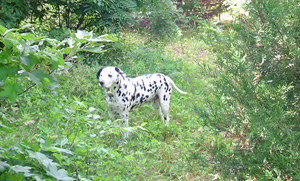
Even if you do all of the steps above and you did them all “by the book” that doesn’t mean that you and your dog won’t run into problems at some point along the way.
Every dog in the world runs into situations where their behavior is affected by the environment. Every dog…even world champions. The reason for this is the fact that dogs live in a human’s world and this is an unnatural environment for them.
When things happen, you can help your dog by identifying the “triggers” that started the dog behavior chain and then desensitise and counter condition them so that your dog knows how to react the next time when faced with the same situation.
Genetically inherited dog behavior and environment
Genetically inherited behaviors play a key roles in understanding how a dog reacts to the stress created by the environment.
There are different terms used by different dog experts (Dog trainers, dog behaviorists, Biologists, Animal scientist, Zoologists, Ethologists, Behavioral ecologists, Animal psychologists, etc.) they all have more or less different expressions, often times describing the same thing.
Please note that throughout this website I may use different terminology than you might be familiar with, but that is in order to keep it simple and to keep the presentation more understandable and easy to read.
One of the genetically inherited behavior groups would be dogs with fearful based behaviors, there are differences in their behavior that can vary from shy and timid dogs to fearful biters, and they are all considered to be weak-nerved dogs.
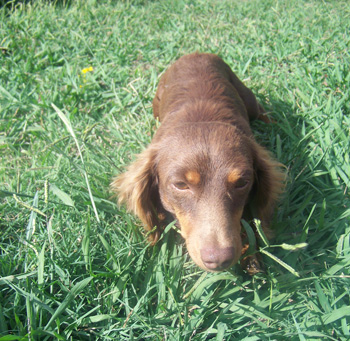
Weak-nerved dogs have problems dealing with everyday environmental stress, in the worst cases they have problems dealing with excitement as well, so often dogs with this type of temperament either urinate or act slightly aggressive when excited.
The best “cure” for these types of dogs is; appropriate Puppy Socialization , (in general, these dogs react well to obedience exercises), Building a relationship is a necessity as this will help your dog when dealing with new environments, and of course you will need to get into desensitizing and counter conditioning as there will be numerous situations in which your dog will need your help.
On the opposite side of the spectrum we have solid nerve dogs. Solid nerve dogs show typical behavioural patterns that many inexperienced dog owners or dog trainers easily mislabel as “disobedience” or dominance, etc.
Solid nerve dogs show confidence; they react little or not at all to environmental stresses. They are “curious”, easier to distract, they like to explore and they get bored easily. In most cases, new dog owners may find difficulties handling dogs with these “outgoing” and “demanding” behavior temperaments.
Dog Behavior and Environment: The Aspect of Dog Socialization
“Dog socialization is a form of a dog’s behavior patterns in regards to his social skills and relationship towards the surrounding environment”
This would be the “formula” of dog socialization. As mentioned in the Puppy socialization part of the website, this is a process that has an “expiration date”. Whatever your dog learns in the form of social interactions and different types of environmental stimuli and stressors within the first 16 weeks of his life will form his behaviour patterns as an adult dog. Everything that we try to do after that period is virtually impossible to create and can only be altered or adapted. In simple terms, the box has been closed.
Why is this?
A dog’s brain develops through that period and it is over 80% done within the first 16 weeks of his life. It is scientifically proven that a puppy that was raised in a limited environment will have a smaller brain than a puppy that had a rich environment to learn from. The former puppy’s brain will create less nerve connections.
This is one of the reasons why some dogs tend to “overreact” to certain environments. The environment is “overwhelming” simply because in this case, the dog doesn’t have the brain capabilities to cope with it. For example, if you take a farm dog to a city downtown you will see a terrified animal that will keep “collapsing” at any given stimulus from that environment.
Can we do something about this?
That depends on the dog, the level of socialization and many other aspects. In general, we can’t do much (other than learn to manage the issue) since the dog can’t implement the nerve connections necessary for his brain to “accept” certain new criteria.
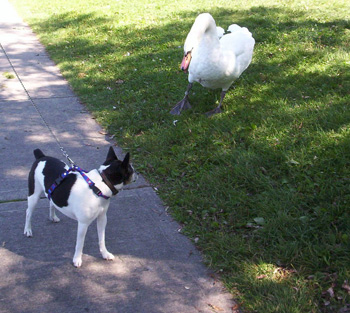
This is the reason that I repeat over and over again; don’t waste your valuable time on poorly organized Puppy Socialization classes. Nothing in the classroom can be trained to fit the real world scenarios and environmental situations. Puppy socialization classes, when properly organized, can be incorporated as part of a puppy’s socialization plan, but it cannot be the only part of the plan. To learn more about how to create a complete socialization plan for your puppy, see the Puppy Socialization page. How good or bad your dog will behave and react in the environment where he will live or visit, depends mostly on how much he will “learn” in the first 16 weeks of his life.
Dog Behavior and Environment: Relationship between a dog and his owner or other humans
Every dog owner should ask himself how well he actually knows his dog. In most cases we share stories about how “human” our dogs are by describing certain behaviors that we “see” in our dogs performance, or we find excuses for why our dogs behave the way they behave.
Way too many times I’ve heard dog owners justifying things like their dog growling at other people as “ah, he is just old and grumpy”, or finding reasons for a dog fight or even an attack on humans or other animals.
One of the steps in every dog and handler’s life together, whether we are talking about police service dogs, hunting dogs, family pets, etc. should be building a relationship.
A successful relationship is based on fulfillment, trust, and partnership. No matter how good a police dog can be trained, if the relationship with his handler is poor, performance will be poor.
There is a part of the website called building a relationship where you can find more details about the techniques that can improve your interactions with your dog.
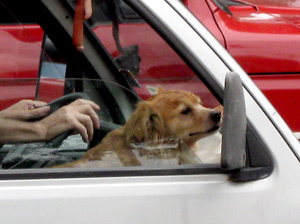
This is a crucial part of and the basis for everything. It is impossible to successfully train your dog without a good relationship, nor to help your dog when dealing with different environments without a good relationship. It is helpful in helping your dog cope, if you can start a play session in an environment that your dog has a problem dealing with.
Dogs will never engage in a play session if the situation is too intimidating or potentially unsafe. By bringing in the game, this is delivering the clear message to your dog that “there is nothing to worry about” since you are “relaxed” and initiating play.
Interaction with your dog is the only way to build a relationship and trust. If you are attending a local obedience class or doing any other type of dog training in order to achieve the goal of having your dog listen to you, you’ve got the whole idea backwards.
No amount of rewards or punishment will make your dog reliably responsive to you if there isn’t first a healthy relationship between you and your dog.
The same thing applies to other people, guests, etc. We all know that a dog with poor social skills will display either avoidance or aggression towards unfamiliar people. If this situation is not handled properly, for example, if we present humans in such a way that everyone of them greets the dog with excitement or gives treats, we are either “teaching” our dog that every person that he meets may potentially have treats or, to get excited and to run to say “hi” to everybody.
What is wrong with this picture?
Not every person has treats, and not every person likes animals. This is a false presentation of the world to our dog which may lead to an unnecessary, confusing or even dangerous situation for both humans and dogs. Not to mention that an excited dog is a hundred times more difficult to get control of.
The best way to present humans is as part of the environment and everyday life. Balance your dog’s response and your dog’s level of excitement when introducing new people. You can find out more about this in the puppy socialization part of the website.
If you have a dog that reacts to strangers, regardless of his age (if the socialization period is done or not) you need to help your dog learn how to manage these situations in everyday life. Desensitizing and counter conditioning is one of the best techniques out there that may help you in dealing with these issues.
Dog Behavior and Environment: where the dog lives
This is a very important factor and together with the above mentioned factors it closes the circle of all the things that shapes most of our dog’s behaviors.
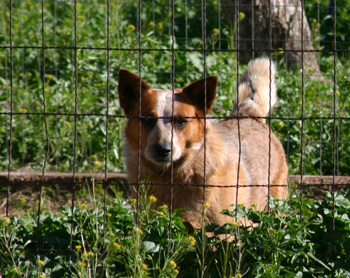
The environment may trigger and increase our dog’s natural drives (like prey drive), however it may be the answer and reason for some territorial behaviors or aggression/fearful reactions as well. Having a hunting dog that lives in an area like a farm or cottage in the woods (with lots of wildlife around) may increase the hunting activities in your dog.
On the other hand, a fenced back yard with busy traffic activities on the other side may trigger your guardian dog to show territorial behaviors or the so called “fence aggression” effect.
As like anything in our dog’s life, the critical period of puppy socialization plays the most important role, how we “present” the environment or don’t present it, is how our dog will create a behavior response for it. For example, even guardian dogs can live peacefully in a fenced back yard with lots of distractions on the other side of the fence, if this environment is presented properly. On the other hand if we expose a guardian dog to a back yard and don’t do anything about presenting the environment, our dog will create his own behavior responses which in the case of guardian dogs will probably be his genetically inherited behavior, which is to guard.
Another factor that can impact a dog’s reaction to the environment around him is the hazard avoidance behavior that is based on instinct and fear. There are many behavior patterns that are the manifestation of fearful instincts. What determines your dog’s fear threshold? That answer depends on the breed, socialization level, environmental stressors, etc.
There are many different ways that you can deal with this problem and they vary from building a relationship which is the foundation for a proper interaction and life with your dog, puppy socialization which is a must for any dog owner to do with their young puppy, and desensitizing and counter conditioning techniques that will help you overcome some obstacles in your everyday dog’s life situations.
Since dealing with fear and how fear shapes our dog’s daily life is a really important and relatively big topic (there are quite a few dog behavior responses that result from this instinct), there is a part of the website in dog behavior problems named Fearful Dogs, in which you can find more details and symptoms that may help you recognize different dog behavior groups in order to help you deal with the ongoing issues that you may have with your dog.
It is really important to understand how dog behavior and environment are related to each other and how to help your dog be more comfortable and more “productive” in everyday life. Dealing with the basics like these mentioned above, will make your life easier, and your dog training attempts more successful.
Return from Dog Behavior and Environment to Training Your Dog and You

